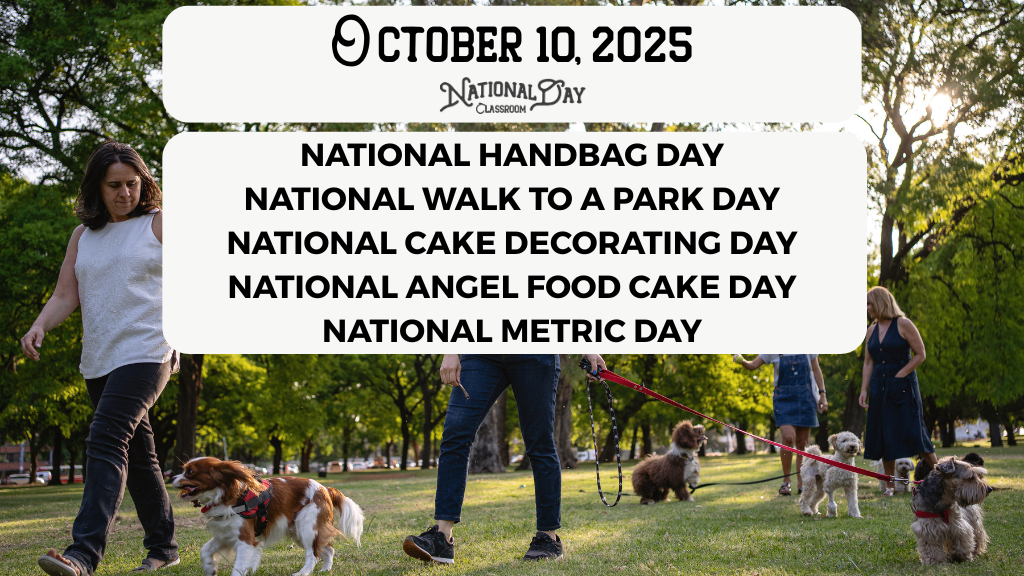
National Metric Day, celebrated on October 10th (10/10) to honor the decimal nature of the system, is the perfect time for engaging, hands-on math activities. The best lessons focus on students actually using the metric system to develop an intuitive feel for the units, rather than just memorizing conversions.
Here are some math lesson ideas, categorized by the type of metric measurement, along with a fun competition concept.
1. Length, Mass, and Volume Measurement Stations (The Metric Challenge)
Set up different stations around the classroom (or school) for students to practice measuring with metric tools. A key tip is to have them estimate first, and then measure.
| Station | Focus | Materials Needed | Activity Description |
| Length Lab | Millimeters, Centimeters, Meters | Meter sticks, metric rulers, tape measures, string | Students measure various items: their pencil’s length (cm), the width of their textbook (mm), the height of the door (m), and the perimeter of the room (m). |
| Mass Market | Grams and Kilograms | Metric scales, small items (e.g., paperclips, glue sticks, apples, bags of beans/rice) | Have students estimate and then measure the mass of 3-5 different objects in grams (g) and kilograms (kg). To build an intuitive sense, have them try to find an object that has a mass of exactly 100 g or 1 kg. |
| Volume Voyage | Milliliters and Liters | Graduated cylinders, beakers, measuring cups (metric), different sized containers, colored water | Students pour water to measure the volume of various containers in milliliters (mL) and liters (L). They can also estimate how many mL of water it would take to fill a small cup, then check their estimate. |
| Body Ruler | Length/Height | Tape measures, pre-printed cards/sheets | Students measure parts of their own body: their height (cm), the length of their foot (cm), and the span of their hand (cm). They can then use their body measurements to estimate the length of other classroom objects. |
2. Decimal-Based Conversions
The metric system’s relationship to powers of 10 is its superpower. Use activities that highlight the simplicity of moving the decimal point.
a. Length Line-Up
- Preparation: Create cards with various length measurements, all for the same object (e.g., a stick) but in different units: 1.2 m, 1200 mm, 120 cm, 0.0012 km.
- Activity: Give a small group of students a mixed set of measurement cards.
- Challenge: Have the students work together to convert all the measurements to a single base unit (like meters) and then physically arrange the cards in a line from shortest to longest. This reinforces that all the listed measurements are equivalent and that converting only involves moving the decimal.
b. Metric Recipe Conversion
- Preparation: Find a simple recipe (like playdough, a no-bake treat, or a non-food recipe) with ingredients listed in metric units (grams and milliliters).
- Activity: Challenge the students to double or triple the recipe, and then convert all the new amounts to a different unit (e.g., convert all grams to kilograms, and all milliliters to liters).
- Example: If the recipe calls for 500 g of flour, doubling it is 1000 g, which converts easily to 1 kg.
3. Critical Thinking and Comparison
These activities help students develop real-world “metric sense” and compare metric units to the customary units they may already know.
a. “Would You Rather…?” Metric Edition
Present a series of fun, comparative questions that require conversion and critical thinking. Students must convert one of the measurements to the other unit before making a choice and justifying their answer.
- Would you rather have a pet snake that is 200 cm long or a pet snake that is 3.5 m long? (The 3.5 m snake is 350 cm, which is much longer.)
- Would you rather carry a backpack with a mass of 5000 g or a backpack with a mass of 6.5 kg? (The 6.5 kg backpack is 6500 g, so you’d rather carry the 5000 g one).
- Would you rather drink a glass of juice that is 0.2 L or a glass that is 150 mL?
b. Estimation Competition
This is a great whole-class activity to develop an intuitive feel for the units.
- Setup: Choose a few common items (a pencil, a bucket, a large stack of books, a classroom distance).
- Activity:
- Show the students a metric unit (e.g., 1 meter, 500 grams, 1 liter).
- Ask students to write down their best estimate for the measurement of each item in that specific unit.
- Use the actual metric tools to measure the items accurately.
- The student whose estimate is the closest wins a small prize (or bragging rights).
Bonus: Integrate Art and Design
Metric Poster Design
Have students design a poster that illustrates the simplicity of the metric system. The poster should visually represent the prefixes and their meanings using powers of 10.
- Theme: The “Metric Ladder” or “King Henry Died By Drinking Chocolate Milk” mnemonic, focusing on the decimal shifts.
- Art Connection: They can use artistic elements to make the relationship between the base unit (meter, gram, liter) and the larger/smaller units (kilo, centi, milli) clear.